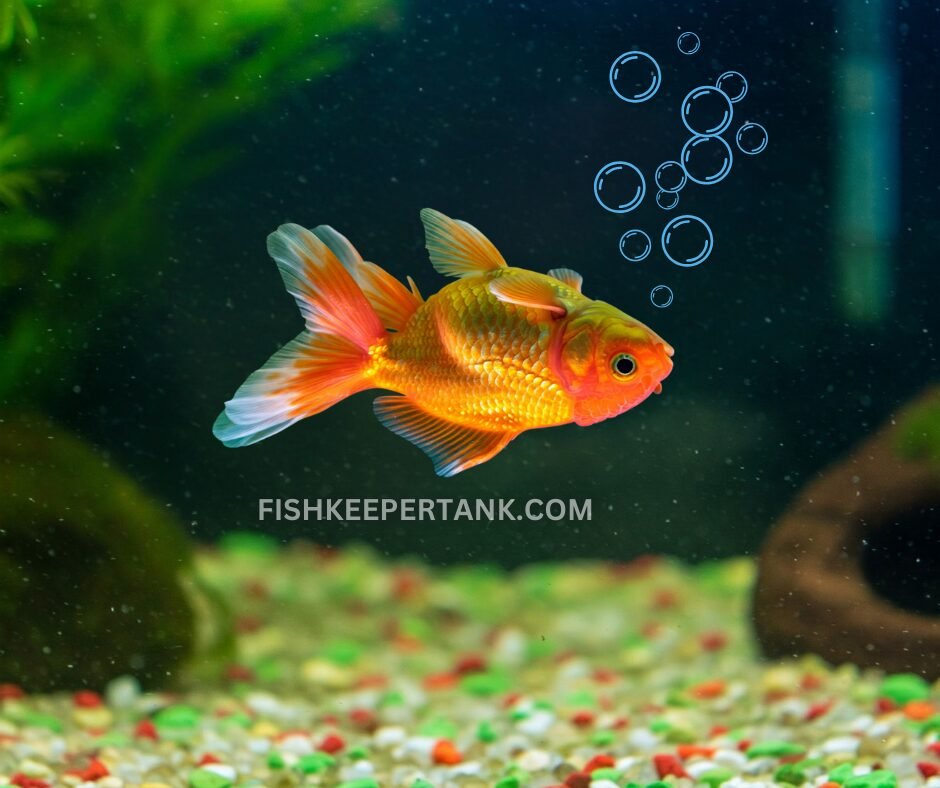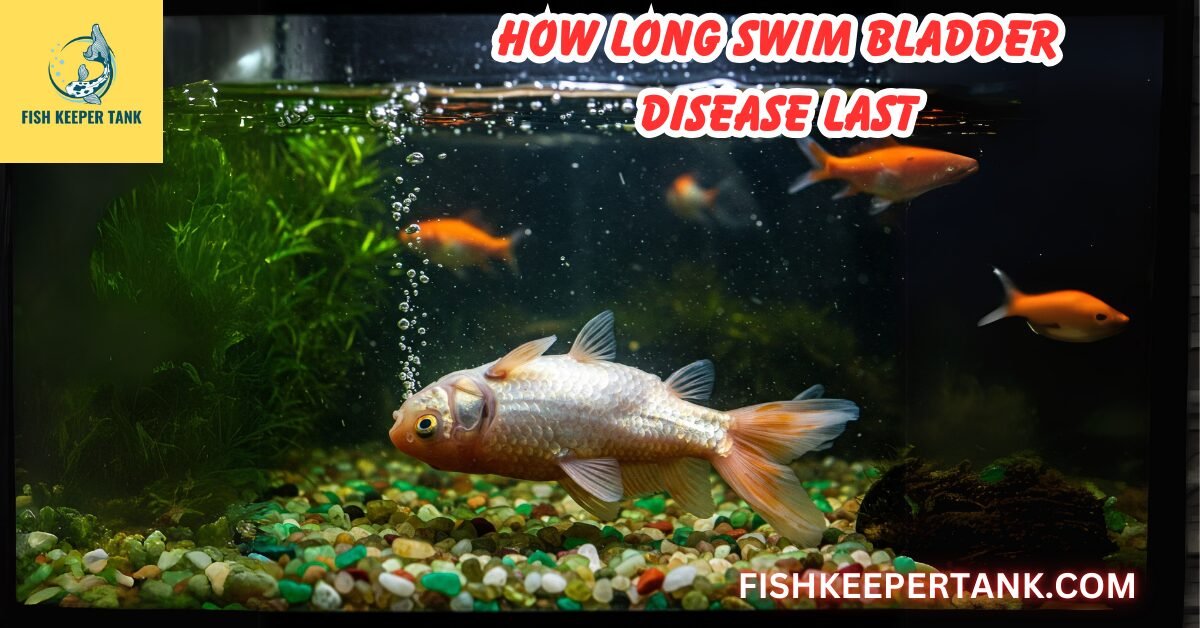Introduction
Swim bladder disease remains a usual yet troubling problem that affects aquarium fish owners. The swim bladder suffers damage in this disorder which is a system that controls fish buoyancy. Such damage results in fish having difficulty managing their water position through unintentional floating or falling to the water bottom.
Aquarium hobbyists frequently ask about the duration of the effects of swim bladder disease on their fish. Several elements determine “How Long Swim Bladder Disease Last” among which are the severity of symptoms, underlying causes, and treatment promptness. Swim bladder disease spans from recovery within a few days to persist throughout several weeks and sometimes develops into a long-lasting illness.
The proper knowledge of swim bladder disease in fish allows pet owners to detect early symptoms and select effective treatments that result in lasting health benefits for their fish pets. This article delivers a comprehensive breakdown of swim bladder disorder in fish by exploring its sources of origin together with diagnostic signs, available treatment plans, and defensive practices.
Key Takeaways
- Swim bladder disorder frequently appears as a widespread disease that impacts fish buoyancy control.
- Patients show signs of floating or sinking when combined with swimming problems along with belly distension.
- Among various causes of swim bladder disease, fish develop this disorder because of overeating, constipation, infections, poor quality water, and genetic predispositions.
- Early diagnosis and treatment increase recovery chances.
- The prevention measures consist of giving suitable nourishment to fish while keeping water conditions stable and reducing any stress they experience.

What Is Swim Bladder Disease?
Swim bladder disease is a pathological condition that damages the swim bladder, which serves as the internal gas organ that ensures fish maintain their buoyancy. Any malfunctioning of the swim bladder causes fish to lose their ability to swim properly.
Swim bladder dysfunction alone does not represent a disease because it emerges from alternative health conditions. Swim bladder disease develops as either a short-term or long-term problem based on how the condition was caused. The knowledge of this condition enables proper medical intervention to both treat and stop its return.
How Fish Get Swim Bladder Disease
Multiple conditions exist which may result in swim bladder disorder in fish. These include:
- When a fish eats in excess, it does not only consume too many calories but also swallows too much air from its environment.
- Poor digestion leads to constipation.
- Bacterial or parasitic infections.
- Physical injuries or congenital disabilities.
- Poor water conditions or sudden temperature changes.
Swim bladder disorder in fish becomes more frequent when they reside in environments that do not meet their requirements. A healthy swim bladder requires adequate care together with an appropriate diet.
What Fish Species Are Affected by Swim Bladder Disease?
Swim bladder disease shows a tendency to affect any fish type, but certain fish species develop this condition more easily.
Commonly Affected Fish:
- Goldfish: The gas-containing organ in goldfish gets easily harmed because of its rounded body shape.
- Betta Fish: The swim bladder of Betta Fish remains delicate, which makes them vulnerable to swim bladder problems brought on by overfeeding.
- Koi Fish: The swim bladder health of Koi Fish remains at risk because of infections as well as problems from poor water quality.
- Cichlids: Bigger species of cichlids experience swim bladder disease because of bacterial infections.
The proper treatment of these fish needs special attention since swim bladder difficulties need effective prevention and management.
Symptoms of Swim Bladder Disease in Aquarium Fish
Early identification of swim bladder symptoms enables proper prevention of dangerous complications. Some common signs include:
Sinking or Floating to the Top
Fish with swim bladder problems lose their ability to keep themselves in proper water position because their condition makes them drift either downward to the bottom or upward to the surface without control.
Struggling To Stay Upright, Swimming Upside Down or Sideways
Because of swim bladder abnormalities, the fish will either float upside down or swim in sideways positions.
Distended Belly
A swollen or distended belly appears frequently as a symptom that results mainly from digestive blockages or internal infections.
Curved Back
Fish’s spinal curvature often becomes abnormal because of stomach expansion or having their swim bladder under constant pressure.
Changed Appetite
Swim bladder disease affects fish eating behavior, as they experience difficulties both finding food and swallowing it because of impaired buoyancy.
How Long Can Betta Fish Go Without Food?

Causes of Swim Bladder Disease
Overeating
Swim bladder issues emerge when fish consume excessive amounts or eat at dangerous speeds, causing digestive blockages.
Constipation
Food materials that remain undigested inside the fish intestines create pressure on the swim bladder, resulting in buoyancy issues. Betta Fish Constipation: Betta Fish Not Pooping
Dropsy
A bacterial infection called dropsy creates fluid retention, leading to swim bladder complications while causing bloating. Dropsy In Betta Fish
Cysts in the Kidneys
Swim bladder function becomes impaired when cysts or tumors develop and exert pressure on this important organ.
Poor Water Quality
Fish living in contaminated or low-oxygen water conditions experience immune system deterioration, exposing them to various infections.
Sudden Change in Water Temperature
The body mechanisms of fish experience negative effects when temperature changes happen too quickly, resulting in swim bladder disorders. Betta Fish Water Temperature: The Essential Guide
Parasites or Bacterial Infections
The swim bladder’s function will be compromised through fluid accumulation along with swelling, resulting from infectious agents. How To Treat a Sick Betta Fish? Betta Fish Diseases and Treatment
Damage to the Organ Due to Fight or Hurt from Decorations
Aggressive tank mate behavior together with decorative objects that have sharp edges will cause internal organ damage in fish.
Shock, Trauma, Stress
Environmental conditions that change suddenly stress fish to such an extent that they lose buoyancy control mechanisms. Stress in Betta Fish
Birth Defect
Fish with a birth defect of abnormal swim bladder shape become more susceptible to swim bladder disorders.
Age Factor
Swim bladder disorders naturally occur in older fish because their organs gradually weaken with age. How Long Do Betta Fish Live? Betta Fish Lifespan
Genetics
Swim bladder disease occurs naturally in premium goldfish and bettas because of their genetic structure.
How Vets Diagnose Swim Bladder Disease in Fish
A veterinarian performs three main steps when diagnosing swim bladder disease in fish.
- Physical Examination – Checking for visible swelling or injuries.
- Diagnostic Tools (X-rays and Ultrasounds) – Helps identify swelling within fish bodies, infections, and blockage issues.
- Water Quality Tests – Conducted to eliminate potential environmental causes of swim bladder disorder in fish.
Swim Bladder Disease Treatment
Changing Diet or Fasting
- Your fish needs a 24-48 hour fasting period to help digestion return to its normal state.
- Reintroduce feeding by providing peas or high-fiber diets, which are easily digestible for them.
Maintaining Proper Water Parameters
- Keep water clean and well-oxygenated.
- Tropical fish need water temperatures that stay between 76-80°F.
Feeding the Fish Peas
- The laxative properties of peas help dissolve constipation in fish.
- A process of boiling and peeling should precede peas being mashed for use as fish food.
Using Antibiotics
- Treatment with prescribed antibiotics from a veterinarian becomes necessary if the fish disease is bacterial in origin.
Other Supportive Treatments
- The application of Epsom salt baths will help with swelling reduction.
- Hand-feeding might be necessary due to eating difficulties experienced by the fish.

Prognosis for Aquarium Fish with Swim Bladder Disease
- Treatment duration depends on the extent of illness in fish.
- Cases of swim bladder disease resolve in a few days for mild conditions, yet severe cases can extend to weeks or even months.
- The outcome of recovery depends on how severe the condition is.
- Swim bladder disease in fish recovers in a week for minimal cases but requires months to heal in extreme situations.
How to Prevent Swim Bladder Disease
Provide a Balanced Diet
- The fish diet needs well-balanced nutrition components made from premium-quality food sources.
Avoid Overfeeding
- Feed your fish in small amounts rather than large meals, which reduces the risk of digestive issues.
Maintain Proper Water Conditions
- Maintain clean, well-aerated water.
- Ensure your aquarium has enough room for fish to swim while limiting the number of fish to a reasonable capacity.
Prevent Infections and Injuries
- Quarantine new fish before adding them to the tank.
- Avoid sharp decorations and aggressive tank mates that may cause injuries.
The prevention of swim bladder disorder in fish becomes possible through these consistent steps, which maintain an aquatic environment of health and happiness.
How Long Can a Fish Live with Swim Bladder Disease?
- Fish entering the survival period beyond months typically survive, although they might endure reduced life quality under proper care.
- Swim bladder disorder in fish may become chronic if the underlying cause is untreatable, but many fish can live for months or even years with careful management.
How Long Does It Take for a Fish to Get Over Swim Bladder Disease?
- Fish recover from swim bladder disease based on multiple critical elements such as disease origins, the extent of the defect, and the swiftness of treatment delivery.
- The duration of swim bladder disease in fish infection ranges from several days for milder conditions to up to months for severe cases.
- The correct detection of swim bladder disease along with suitable treatment allows patients to make a complete recovery from three weeks to several days.
- The swim bladder condition needs extended management through medical intervention because genetic or permanent swim bladder damage exists.
How to Stop Swim Bladder Disease from Happening
A preventive plan is necessary to manage swim bladder disease in fish populations. Good aquarium maintenance routines will decrease the chances that fish will develop swim bladder impairment.
Provide a Balanced Diet
- Ensure fish receive a nutrient-rich diet with high-quality, digestible food.
Avoid Overfeeding
- Offer smaller meals instead of large portions to prevent digestive issues.
Maintain Proper Water Conditions
- Keep water clean and regularly monitor ammonia and nitrite levels.
Prevent Infections and Injuries
- Remove sharp tank decorations and limit aggressive tank mates to avoid injuries.
Can Fish Die from Swim Bladder Disease?
- Fish that receive no treatment for swim bladder disease will eventually pass away.
- The condition usually does not cause death itself, but serious instances might lead to starvation, as well as infections that trigger organ failure and chronic stress, which eventually results in death.
- Fish that experience improper swimming face difficulties eating their food and defending themselves from predators when in a community aquarium environment.
Is Swim Bladder Disease Contagious to Other Fish?
- The condition cannot spread between fish, so swim bladder disease remains non-contagious.
- The disease affects only single fish organisms because of their diet, inability, and unfavorable water quality, alongside genetic attributes and bodily injuries.
- The spread of bacterial or parasitic infections that affect swim bladder affliction constitutes a minimal risk for establishing similar conditions among fish located in the same aquarium.
Is Swim Bladder Disease Fatal?
- Swim bladder disease maintains a possibility of non-fatal consequences; however, persistent neglect of treatment can make it deadly for the fish.
- Fish might recuperate from intestinal issues, unhealthy eating habits, and small infections when given proper nursing care.
- Death occurs when severe infections, organ damage, or inherited genetic defects result in chronic suffering, starvation, and secondary illnesses.
- The survival chances of a fish rise significantly when doctors diagnose the illness early and provide correct treatment within a suitable aquarium setting.
Conclusion
Swim bladder disease in fish affects fish regularly, but healthcare professionals can successfully manage this condition. Fish owners who grasp all swim bladder disease aspects, including signs and remedies, enable their aquatic pets to bounce back faster while maintaining good health. The prevention of swim bladder disorder in fish begins with adequate feeding practices in conjunction with keeping water spaces free from pollutants.
Fish owners who detect swim bladder disease signs should stay calm because tank health, nutrition, and correct treatment allow most fish to recover from this condition.
People Also Read:

